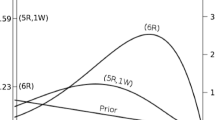Abstract
Newcomb's problem supposedly involves your choosing one or else two boxes in circumstances in which a predictor has made a prediction of how many boxes you will choose. We argue that the circumstances which allegedly define Newcomb's problem generate a previously unnoticed regress which shows that Newcomb's problem is insoluble because it is ill-formed. Those who favor, as we do, a ``no-box'' reply to Newcomb's problem typically claim either that the problem's solution is underdetermined or else that it is overdetermined. We are no-boxers of the first kind, but the underdetermination we identify is more radical than any previously identified: it blocks the very set-up of the problem and not just potential solutions to the problem once it has been set up. The defect is subtle, but it cripples every genuine version of the problem, regardless of variations in such things as the predictor's degree of reliability, the basis on which the prediction is made, or the amount of money in each box. The regress shows that, surprisingly enough, no one can understand Newcomb's problem, and so no one can possibly solve it.
Similar content being viewed by others
Author information
Authors and Affiliations
Rights and permissions
About this article
Cite this article
Maitzen, S., Wilson, G. Newcomb's Hidden Regress. Theory and Decision 54, 151–162 (2003). https://doi.org/10.1023/A:1026249026940
Issue Date:
DOI: https://doi.org/10.1023/A:1026249026940




